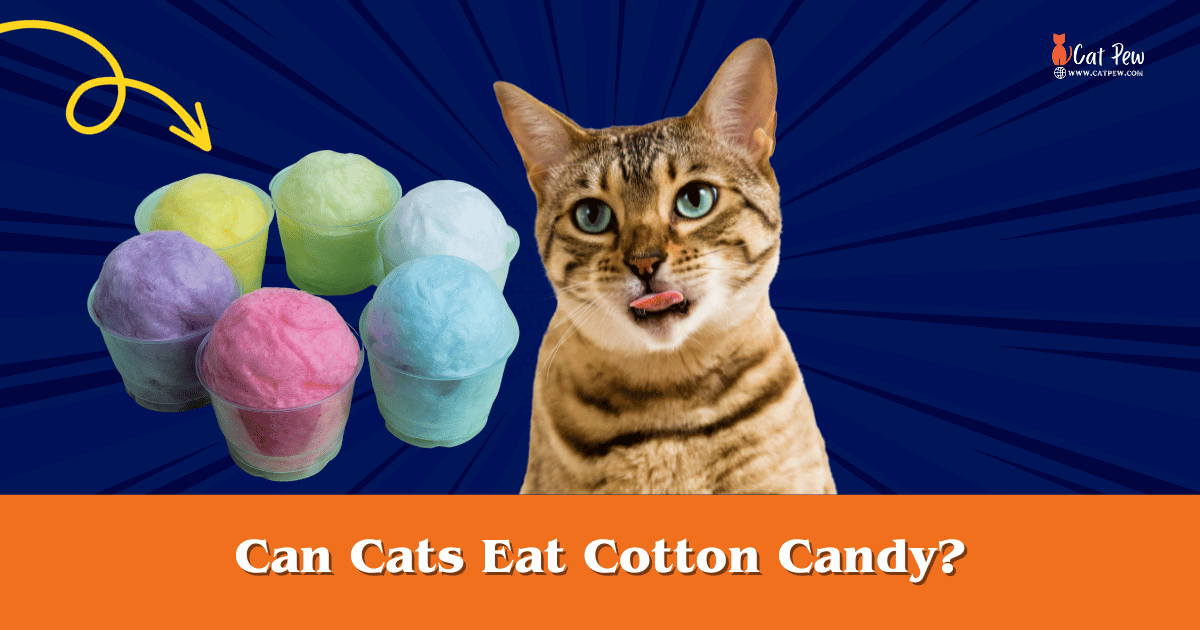Can Cats Eat Cotton Candy?
No, cats should not eat cotton candy as it can be harmful to their digestive system. Cats should not consume cotton candy due to the potential risks it poses to their delicate digestive systems.
While the sugary delight might be tempting, it is essential to prioritize your pet’s health and well-being. Cotton candy is essentially spun sugar, which lacks any nutritional value for cats and can lead to stomach upset, weight gain, or even dental issues.
Additionally, the artificial dyes and flavorings commonly found in cotton candy can be toxic to cats. Therefore, it is best to keep cotton candy away from your feline friends and provide them with a balanced and appropriate diet.
Understanding The Dangers Of Cotton Candy For Cats
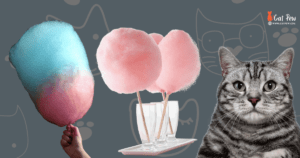
As pet owners, it’s crucial to be aware of what foods are safe for our furry friends. While cotton candy may seem harmless and whimsical to us, it can pose serious risks to our feline companions. In this article, we will delve into the dangers associated with cats consuming cotton candy, exploring its composition and potential harm. By understanding these risks, we can ensure the well-being and health of our beloved pets.
Cotton Candy – An Overview
Before we explore the dangers, let’s first take a quick look at what cotton candy is. Cotton candy, also known as candy floss, is a fluffy and sugary treat commonly found at carnivals, fairs, and amusement parks. It is made by spinning or heating sugar until it liquefies and then rapidly cooling it, creating a thread-like texture. Although it may seem delightful, its appeal to cats is purely visual rather than nutritional.
The Composition Of Cotton Candy
Understanding the composition of cotton candy gives us insight into why it can be problematic for cats. Cotton candy is essentially pure sugar, usually with added flavors and colors. It lacks essential nutrients necessary for a cat’s well-being and is entirely devoid of protein, healthy fats, vitamins, and minerals. Feeding cotton candy to cats is akin to providing them with empty calories that can lead to various health issues.
Why Cotton Candy Can Be Harmful To Cats
Cotton candy can have detrimental effects on the digestive system and overall health of cats. Here’s why:
- Risk of obesity: Cats require a balanced diet to maintain a healthy weight. The high sugar content in cotton candy can contribute to weight gain and increase the risk of obesity in cats. Obesity can lead to various health problems, including diabetes, joint issues, and heart disease.
- Gastrointestinal issues: Cats have a sensitive digestive system that is not designed to handle large amounts of sugary substances. Consuming cotton candy can lead to upset stomach, diarrhea, and even pancreatitis in cats.
- Dental problems: The sticky nature of cotton candy can cling to a cat’s teeth, promoting the growth of harmful bacteria. This can result in tooth decay, gum disease, and other dental issues. Cats may also be at risk of choking on the cotton candy fibers.
Cotton candy is far from being a safe treat for cats. It is important to prioritize their health and avoid giving them foods that could potentially harm them. Instead, opt for cat-friendly treats specifically formulated to meet their nutritional needs. By doing so, we can ensure our feline friends stay healthy and happy.
Potential Risks And Health Issues

While cotton candy may be a delightful treat for humans, it is important to be cautious when it comes to sharing this sugary snack with your feline friend. Cats have unique dietary needs, and certain foods can pose potential risks and health issues for them. In this article, we will discuss the role of sugar in a cat’s diet, the impact of high sugar consumption on cats, and the possible health problems that cotton candy can cause.
The Role Of Sugar In Cats’ Diet
Cats are obligate carnivores, which means their bodies are designed to obtain necessary nutrients from animal-based sources. Their natural diet is high in protein and low in carbohydrates. Sugar, in any form, is not an essential part of a cat’s diet and can be challenging for their digestive system to process.
The Impact Of High Sugar Consumption On Cats
When cats consume high amounts of sugar, it can lead to several adverse effects on their health. First and foremost, excessive sugar intake can contribute to obesity in cats, which increases the risk of various health conditions, including diabetes, heart disease, and joint problems.
Additionally, a diet high in sugar can lead to dental issues such as tooth decay and gum disease. Cats do not naturally produce enzymes in their saliva that help break down sugar, making them more susceptible to dental problems when exposed to sugary foods like cotton candy.
Furthermore, consuming too much sugar can disrupt a cat’s natural gut flora and potentially lead to digestive issues such as diarrhea, vomiting, and gastrointestinal upset.
Possible Health Problems That Cotton Candy Can Cause
Cotton candy is essentially pure sugar spun into a fluffy confection. Feeding your cat cotton candy, even in small amounts, can have negative health consequences. Here are some potential health problems that can arise:
- Weight Gain: The high sugar content in cotton candy can quickly contribute to weight gain in cats. Excess weight can strain their joints and lead to a host of health issues.
- Diabetes: Cats can develop diabetes when their bodies struggle to regulate blood sugar levels properly. Feeding them sugary treats like cotton candy can exacerbate this risk.
- Gastrointestinal Distress: The high sugar content of cotton candy can upset a cat’s stomach, leading to digestive problems like diarrhea, bloating, and discomfort.
- Tooth Decay: Cats are prone to dental issues, and the high sugar content in cotton candy can accelerate tooth decay and gum disease.
It is important to prioritize your cat’s health and well-being by providing them with a balanced and appropriate diet. While cotton candy may be tempting to share, it is best to avoid offering it to your feline companion due to the potential risks and health issues associated with high sugar consumption.
Signs And Symptoms Of Sugar Toxicity In Cats
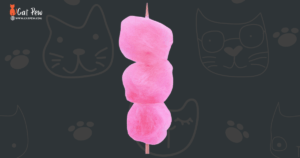
Cotton candy is not suitable for cats to eat as it contains high amounts of sugar, which can lead to sugar toxicity. Signs and symptoms may include increased thirst, weight gain, and frequent urination. It’s important to avoid feeding cats sugary treats to promote their overall health and well-being.
Identifying The Signs Of Sugar Overload In Cats
If you’ve ever indulged in a sugary treat like cotton candy, you know how tempting it can be to share your snacks with your furry feline friend. However, it’s important to remember that cats have different dietary needs than humans, and certain foods can be harmful to their health. One such treat is cotton candy, which is loaded with sugar. While an occasional taste of this fluffy confection may not cause any harm, regular consumption can lead to sugar toxicity in cats.
How Excessive Sugar Intake Affects Cats’ Health
Cats are obligate carnivores, which means their bodies are designed to thrive on a diet consisting primarily of meat. They cannot digest and process sugars in the same way humans can. When a cat consumes excessive amounts of sugar, it can harm their health. Sugar overload can lead to obesity, diabetes, dental issues, and even organ damage. Cat owners need to be aware of the signs and symptoms of sugar toxicity to ensure their furry friend’s well-being.
Common Symptoms Of Sugar Toxicity In Cats
Sugar toxicity can manifest in various ways in cats. Here are some common symptoms to watch out for:
- Increased Thirst: Cats with sugar overdose may start drinking more water than normal. Excessive sugar intake can disrupt their thirst regulation and lead to dehydration.
- Weight Gain: Regular consumption of sugary treats can contribute to weight gain in cats. Obesity can lead to various health issues such as joint problems and increased risk of diabetes.
- Lethargy: Cats experiencing sugar toxicity may appear more lethargic or have decreased activity levels. Too much sugar can affect their energy levels and overall well-being.
- Increased Urination: Excessive sugar intake can also result in increased urination in cats. If you notice your cat using the litter box more frequently, it may be a sign of sugar toxicity.
- Dental Problems: Sugar is notorious for causing dental issues, and cats are no exception. Too much sugar can lead to tooth decay, gum disease, and bad breath in feline companions.
- Digestive Issues: Cats may experience digestive problems such as diarrhea or vomiting when they consume excessive sugar. These symptoms can indicate an intolerance or toxicity to sugar.
If you observe any of these symptoms in your cat after they have consumed cotton candy or other sugary treats, it is crucial to consult a veterinarian. They can provide an accurate diagnosis and guide you on the appropriate steps to ensure your cat’s health and well-being are restored.
Alternatives To Cotton Candy For Feline Treats
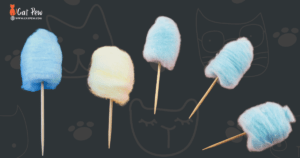
If you’re a cat owner, you may have wondered if it’s safe to share the sweet delight of cotton candy with your feline friend. While the occasional lick of cotton candy may not cause harm, the high sugar content and artificial additives can be detrimental to your cat’s health. So, what can you do when your furry companion deserves a special treat? Look no further! We have compiled a list of alternative treats that are not only safe but also delicious for your beloved kitty. Read on to discover healthy treat options, recommended treats for cats’ enjoyment, and even homemade treat recipes your cat will adore!
Healthy Treat Options For Cats
When it comes to treating your cat, it’s essential to prioritize their well-being. Opting for healthy treats is a great way to show your love while keeping them in good health. Here are some fantastic alternatives to cotton candy that will keep your cat purring with delight:
- Freeze-Dried Meat: Cats are obligate carnivores, and freeze-dried meat treats provide a taste of the wild. Whether it’s chicken, turkey, or fish, these protein-packed treats are not only delicious but also packed with essential nutrients. Be sure to choose high-quality, grain-free options to ensure your cat receives the best.
- Baby Carrots: Carrots are a low-calorie and crunchy treat that many cats enjoy. Rich in nutrients like beta carotene, fiber, and vitamin K, baby carrots provide both a tasty snack and potential health benefits.
- Cat Grass: Consider offering your feline companion some fresh cat grass. This natural treat aids digestion and helps prevent hairballs, while also providing essential vitamins and minerals. Your cat will love munching on this greens-filled delight!
Recommended Treats For Cats’ Enjoyment
Now that you know about some healthy options, let’s explore treats that are specifically designed to appease your cat’s taste buds. These specialist treats are not only enjoyable but also offer additional benefits, making them the perfect choice for treating your feline friend:
| Treat Name | Benefits |
|---|---|
| Salmon Treats | Rich in omega-3 fatty acids that promote a healthy coat and support cognitive function |
| Dental Treats | Help reduce tartar buildup and freshen your cat’s breath while providing a tasty snack |
| Creamy Treats | Delicious, lickable treats that offer hydration and a special moment of bonding with your cat |
Homemade Treat Recipes For Cats
If you’re feeling a little adventurous and want to delight your cat with homemade treats, we’ve got you covered! Making treats at home allows you to control the ingredients and ensure only the finest quality for your fur baby. Here are a couple of simple recipes you can try:
- Tuna Treats: Mix canned tuna (in water) with flour, egg, and a pinch of catnip. Shape into small balls and bake until they are crispy. Let them cool before offering them to your cat.
- Pumpkin Paws: Combine canned pumpkin puree (unsweetened), flour, and a touch of honey. Roll out the dough, cut it into small shapes, and bake until golden brown. Your cat will love these chewy delights!
With these alternatives to cotton candy, you can now spoil your furry friend without compromising their health. Always remember to offer treats in moderation and consult your vet if you have any concerns about specific ingredients. Treat time will become a favorite part of your cat’s day, filled with joy, happiness, and a bond that will last a lifetime.
Best Practices For Feeding Treats To Cats
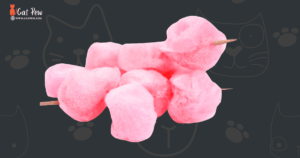
Feeding treats to your furry feline friend can be a delightful way to show your love and affection. However, it is essential to understand the best practices for feeding treats to cats to ensure their health and happiness. In this article, we will discuss important aspects such as moderation and portion control, introducing new treats, and coexisting with feline dietary restrictions. Follow these guidelines to create a well-rounded treat routine for your beloved cat.
Moderation And Portion Control
Treats should be given to cats in moderation and with careful portion control. While indulging our pets in their favorite snacks can be tempting, overfeeding treats can lead to health issues such as obesity and digestive problems. It is important to set limits and ensure that treats make up only a small portion of your cat’s daily diet.
- Limit the number of treats per day based on your cat’s age, weight, and overall health. Consult your veterinarian for specific guidelines.
- Choose treats that are specifically designed for cats, as they are formulated to meet their nutritional needs.
- Consider the size and calorie content of the treats. Smaller treats or treats with lower calorie content are ideal for portion control.
- Divide the treats into smaller pieces, ensuring your cat doesn’t consume too much at once.
- Monitor your cat’s weight and adjust the treat portions accordingly to maintain a healthy body condition.
How To Introduce New Treats To Your Cat
Introducing new treats to your cat’s diet can be an exciting experience for both of you. However, it’s important to take it slow to prevent any adverse reactions. Follow these steps to introduce new treats to your cat:
- Start by offering a small amount of the new treat as a reward during training sessions or as a snack alongside their regular meal.
- Observe your cat’s reaction and check for any signs of allergies or digestive issues.
- If your cat enjoys the new treat and shows no adverse reactions, gradually increase the portion size over time.
- Ensure that the new treat complements their regular diet, providing additional nutritional benefits.
Coexisting With Feline Dietary Restrictions
While treats can be a source of joy for cats, it’s important to consider any dietary restrictions or allergies your cat may have. Here are some tips to coexist with feline dietary restrictions:
| Dietary Restriction | Best Practice |
|---|---|
| Allergies | Avoid treats containing ingredients that trigger allergic reactions. Opt for hypoallergenic or limited-ingredient treats. |
| Weight Management | Choose low-calorie treats or consider using portion-controlled treat dispensers to manage calorie intake. |
| Medical Conditions | Consult your veterinarian before introducing new treats, especially if your cat has underlying medical conditions. |
In conclusion, treating your cat with love and care includes being mindful of their treat consumption. Remember to practice moderation, control portion sizes, introduce new treats gradually, and consider any dietary restrictions they may have. By following these best practices, you can ensure your cat’s treat time is both enjoyable and beneficial for their overall well-being.
Frequently Asked Questions On Can Cats Eat Cotton Candy
Can Cats Lick Cotton Candy?
Yes, cats can lick cotton candy. However, it is not advisable as sugar can be harmful to their health.
What Candy Is Toxic To Cats?
Candy that is toxic to cats includes chocolate, especially dark chocolate, as well as candies containing xylitol, raisins, or macadamia nuts. These can cause serious health issues like vomiting, diarrhea, rapid heartbeat, and even seizures in cats. Keep all candies away from your feline friends.
Is it OK for Cats To Eat Cotton?
No, it is not safe for cats to eat cotton. Consuming cotton can lead to intestinal blockages, which can be serious and require veterinary intervention. Keep all fabric and other non-edible items away from your furry friend to prevent any potential health issues.
What Happens If My Cat Eats A Cotton Swab?
If your cat eats a cotton swab, it can pose serious risks such as choking, gastrointestinal blockage, or damage to the digestive system. Immediately contact your veterinarian for guidance and monitor your cat for any signs of discomfort or unusual behavior.
Conclusion
It’s best to steer clear of offering cotton candy to your feline friend. While the sugary treat may seem enticing, cats lack the necessary enzymes to digest it. Consuming cotton candy can lead to potential digestive issues, such as stomach discomfort or diarrhea.
It’s important to prioritize your cat’s health and choose treats that are safe and suitable for them.

Winston
I'm Winston, the author of this feline-focused (Catpew.com) blog . My love for cats goes back to my childhood, when I spent countless hours playing with my family's tabby, Mittens. This furry friend instilled in me a deep appreciation for the unique personalities, playful nature, and unconditional love that cats offer.

